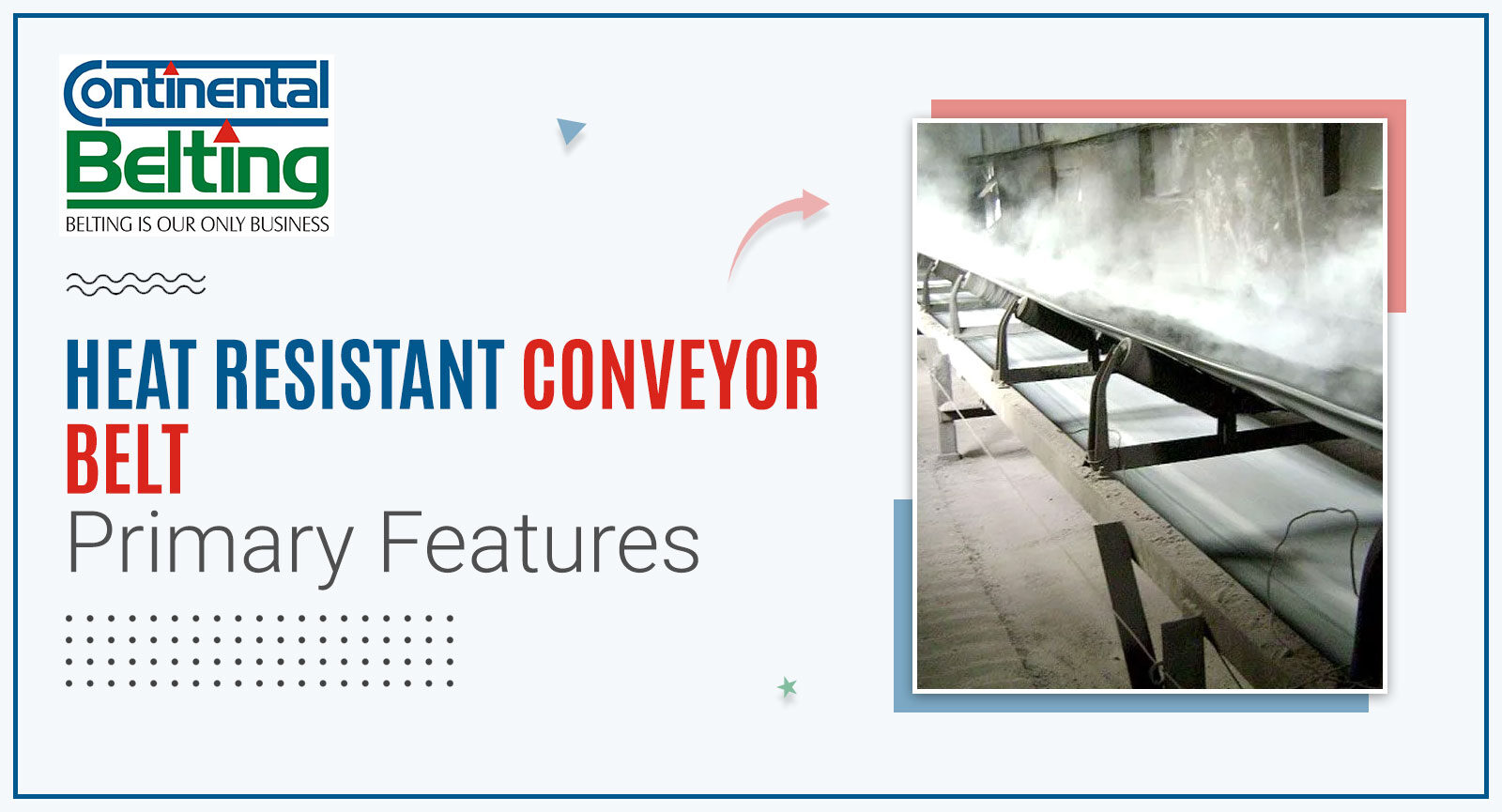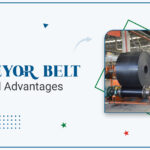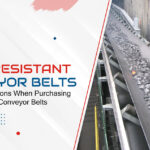The Heat Resistant Conveyor Belt is constructed from heat-resistant rubber cotton canvas that has been layered and vulcanised at high temperatures. Transportation of hot coal, slag, hot moulds, and cement up to 175 degrees Celsius is possible.
The structure of the belt and the heat of the items being transported determine how long a Heat Resistant Conveyor Belt will last.
Features of Heat Resistant Conveyor Belt
- The covering layer is made of ethylene propylene diene monomer (EPDM), while the skeleton is constructed from a high-temperature canvas developed for usage. This combination yields superior performance and a longer lifespan.
- Good heat resistance, a lightweight design, and the ability to carry products at high temperatures are benefits of the heat-resistant conveyor belt.
- Conveying sinter, coke, cement clinker, and other high-temperature materials, with material temperatures not exceeding 800° C and belt surface temperatures not exceeding 220° C, is a primary usage for heat-resistant conveyor belts, which have a broader range of applications than standard conveyor belts.
There is a correlation between the surface temperature of a Heat Resistant Conveyor Belt and its useful life. Since the contact area between the material and the belt surface is minimal when conveying sintered ore, coke, and other bulky materials at 150° C, the belt surface temperature can be kept at a comfortable 60-80° C. When a conveyor belt is used to transport a substance like cement powder, where the viscosity is low, there is a minimum temperature difference between the material and the belt surface.
Rubber cotton and polyester are laminated with heat-resistant rubber and bonded using high-temperature vulcanization to create the Chevron Conveyor Belt. The maximum temperature can be transported at 175 degrees Celsius, making it ideal for transporting materials like coke, cement, slag, and hot castings. A thicker covering adhesive is necessary to maintain the durability of a heat-resistant conveyor belt. Heat-resistant conveyor belt cover adhesive is recommended to be between 6-9 mm and 2-4 mm thick.
What Does The User Value Most?
The belt’s surface temperature shifts based on the material of the particles being conveyed. However, for powdered materials like alumina, black carbon, cement, etc., there are no temperature changes between the belt surface and the material. Therefore the surface must be colder than the lumps to allow air to flow.
All dependable Heat Resistant Conveyor Belt Suppliers in India would advise you to consider the temperatures of both the transported material and the belt surface.
What are the most critical requirements for a Heat Resistant Conveyor Belt?
Three exteriors are available for a Heat Resistant Conveyor Belt:
- Steel cable
- Nylon
- Polyester casing
Steel cord belts come in widths (300–2400mm) and tensile strengths (100–6,000N/mm). On the other hand, fabric belts are limited to lengths of 10 metres or more.
Conclusion
When the temperature of the delivered materials is more than 80 degrees Celsius, a heat-resistant conveyor belt is the best option. The belt deteriorates when a conveyor belt is used to transport something hot. Therefore, Continental Belting Pvt Ltd the best Heat Resistant Conveyor Belt Manufacturers in India offers the highest standard of Heat resistance belt to protect against any potential harm.



